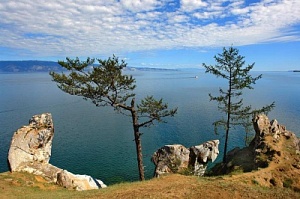TSU employee Bair Tsydenov is working on a complex mathematical model for the study of hydroecological processes in Lake Baikal. The model allows to identify and predict the level of pollution in the lake, as well as to draw conclusions about the quality of the water.
Scientists predict global water crisis already in 2025. Pollution of the fresh water is in the first place to cause the depletion of its reserves. This problem is evident in the example of Baikal: the lake contains about 20% of world reserves of the lake fresh water and almost 90% of Russian reserves, while every year there gets more than 20 million cubic meters of wastewater.
It was found that 60% of the pollution in the lake are coming from the Selenga River, on which basin are concentrated industrial enterprises of Russia and Mongolia. Research of the TSU scientist will help to understand how impurities from the Selenga River are spread across the lake. It will allow ecologists to make conclusions about how fast and on what depth extend impurities of different concentration.
According to the scientist, the spread of contamination indirectly affected by changes in temperature, humidity and wind speed during the day. Furthermore, contamination is carried in the lake differently depending on the time of year.
- Water temperature affects the formation of the flow structure, and hence to transfer impurities - explained Bair Tsydenov. - Also for the lakes of the temperate latitudes is necessary to take into account the phenomenon of thermal bar, which occurs twice a year, due to the spring warming or autumn cooling the water at the surface, reaching a maximum density, gradually sinking to the bottom and initiating circulation flows. In this case, surface contamination can go into the deep part.
Now the scientist is working on a comprehensive 2,5D-model, which takes into account the rate of water turbidity, in order to obtain data on a specific area of Baikal - at the confluence of the lake with the Selenga River. This research is supported by the grant of the President of the Russian Federation. The results can be the basis for high-precision 3D-models with which it will be possible to calculate the circulation of water and impurities in the entire lake.
- Analyses of turbidity water distribution allow to determine successful location for the wastewater treatment plants, as well as to assess their effectiveness, - said Bair Tsydenov. - In addition, in order to predict it is possible to set the extreme parameters of pollutants in the model to get a visual representation about the possible consequences.
He explained that for the calculation of the spread of contamination in the whole lake will require a lot of computing power. With the help of the developed model and the necessary data it will be possible to calculate the circulation of pollution for any other freshwater reservoir.

